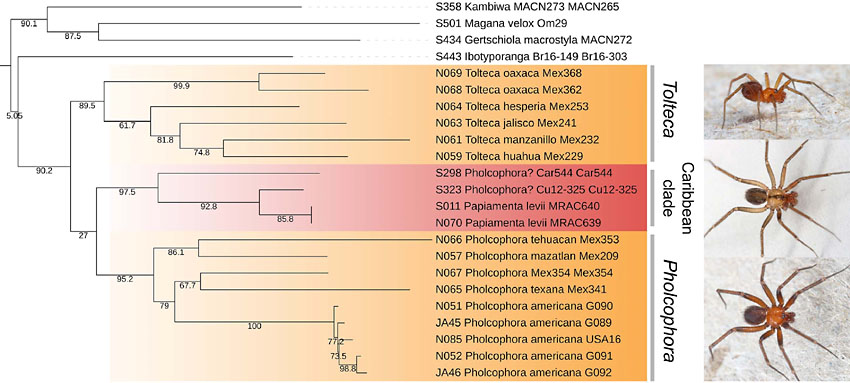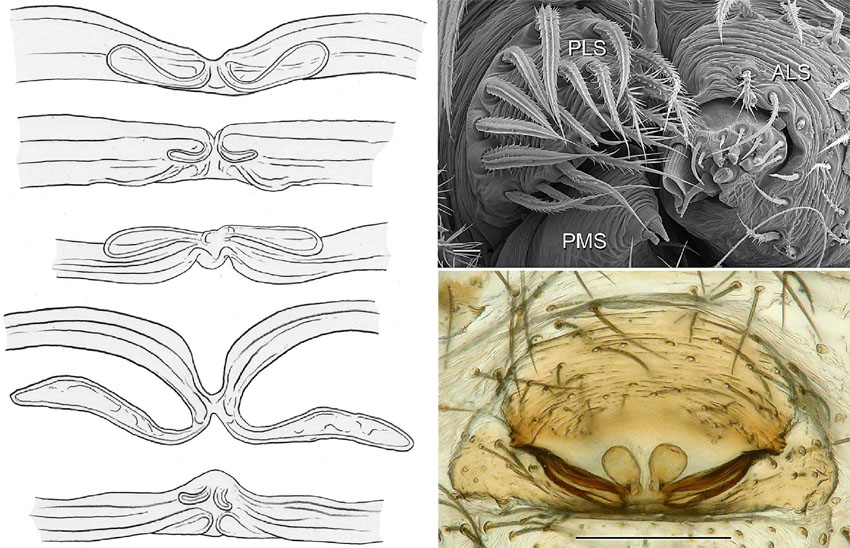
In a previous study we suggested that the karyotype of Pholcophora americana (2n♂ = 29, X1X2Y) is close to the supposed ancestral karyotype of pholcid spiders (Ávila Herrera et al., 2021). First karyotype data for Tolteca (2n♂ = 13, X1X2Y and 15, X1X2Y, respectively) reveal a strong reduction of the number of chromosome pairs within the North American-Caribbean clade. In addition, we document considerable karyotype differentiation among congeners in Tolteca. This agrees with considerable CO1 divergence among Tolteca species but contrasts with very inconspicuous morphological divergence.
Environmental niche analyses show that the widespread P. americana Banks, 1896 (western USA, SW Canada) occupies a very different niche than its Mexican congeners and other close relatives. Caribbean taxa also have a low niche overlap with ‘true’ Pholcophora and Tolteca, supporting the idea that Caribbean ‘Pholcophora’ are taxonomically misplaced.
